Jazzhus Montmartre

Ben Webster and Charlie Shavers at Jazzhus Montmartre, 1971
Ben Webster Sextet, “Blues” “Jazzhus Montmartre”, København – 17 august 1971: Ben Webster, ten., Charlie Shavers, tpt., Finn Ziegler, vln., Niels Jørgen Steen, pno., Niels-Henning Ørsted Pedersen, sbs. and Jørn Elniff, dms.
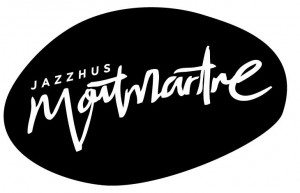 Jazzhus Montmartre is a leading jazz club in Copenhagen, Denmark that is described as “legendary.” Many jazz musicians, including Dexter Gordon, Stan Getz, and Chet Baker, have performed there. It is sometimes also calledCafe Montmartre The Montmartre was located first in Dahlerupsgade, then from 1961 on in Store Regnegade and finally since 1976 in Nørregade 41 before closing down in 1995. Since May 1, 2010 it has been re-opened in Store Regnegade 19A by media executive and entrepreneur Rune Bech together with jazz pianist Niels Lan Doky, who was later replaced as Music Director by saxophonist Benjamin Koppel, and then jazz publisher Christian Brorsen. It is considered to be one of Europe’s major jazz clubs for live world class jazz, and was voted ‘Best Nightclub for Over-60s” by readers of the Danish local newspaper Politken in 2012.
Jazzhus Montmartre is a leading jazz club in Copenhagen, Denmark that is described as “legendary.” Many jazz musicians, including Dexter Gordon, Stan Getz, and Chet Baker, have performed there. It is sometimes also calledCafe Montmartre The Montmartre was located first in Dahlerupsgade, then from 1961 on in Store Regnegade and finally since 1976 in Nørregade 41 before closing down in 1995. Since May 1, 2010 it has been re-opened in Store Regnegade 19A by media executive and entrepreneur Rune Bech together with jazz pianist Niels Lan Doky, who was later replaced as Music Director by saxophonist Benjamin Koppel, and then jazz publisher Christian Brorsen. It is considered to be one of Europe’s major jazz clubs for live world class jazz, and was voted ‘Best Nightclub for Over-60s” by readers of the Danish local newspaper Politken in 2012.
History
It was opened in 1959 by Anders Dyrup with a two week stint by George Lewis. In the beginning the program was dominated by Dixieland jazz (then very popular in Denmark). Shortly afterwards Stan Getz, who lived from 1958 to 1961 with his Swedish wife in Copenhagen, played regularly in the Club. He was followed by other expatriate American jazz musicians, including Dexter Gordon (who lived from 1962 to 1976 in Copenhagen) and Ben Webster (from 1964 on in Copenhagen and Amsterdam).
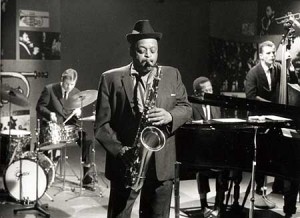 On New Year’s Eve 1961 the Club Jazzhus Montmartre reopened under the lead of Herluf Kamp-Larsen in new premises in Store Regnegade. The Montmartre developed into one of the main locations for jazz in Europe, for long years with Kenny Drew ℗, Alex Riel (dr) and Niels-Henning Ørsted Pedersen as regular rhythm group, who accompanied guest musicians. From 1976 on it was at Nørregade 41 with Kay Sørensen (1938–1988) as owner, while Niels Christensen served as music manager, assisted from 1982 by Lars Thorborg.
On New Year’s Eve 1961 the Club Jazzhus Montmartre reopened under the lead of Herluf Kamp-Larsen in new premises in Store Regnegade. The Montmartre developed into one of the main locations for jazz in Europe, for long years with Kenny Drew ℗, Alex Riel (dr) and Niels-Henning Ørsted Pedersen as regular rhythm group, who accompanied guest musicians. From 1976 on it was at Nørregade 41 with Kay Sørensen (1938–1988) as owner, while Niels Christensen served as music manager, assisted from 1982 by Lars Thorborg.
From 1976 to 1989 Montmartre established itself as one of the strongest jazz venues in Europe. Besides jazz stars likeMiles Davis, Dizzy Gillespie, Stan Getz, Sonny Rollins, Oscar Peterson, Nancy Wilson, Betty Carter, Elvin Jones, Art Blakey, Brecker Brothers and many more, Montmartre also presented world music artists like Milton Nascimento, Gilberto Gil,Djavan, Tania Maria, Youssou N’Dour and King Sunny Adé, as wells as funk/soul artists like James Brown, Tower of Power and Gil Scott-Heron. Local pop and rock artists also saw Montmartre as their homeground, as well as the very popularNatdiskotek (night disco), that attracted youth from all over greater Copenhagen every weekend, and also provided the economic foundations for the club’s strong jazz profile.
In 1989 Kay Sørensen suddenly died and Montmartre was sold to Eli Pries, who had trouble maintaining the clubs traditional mix of art and commercial success. Pop musician Anne Linnet took over the club in 1992, changing the club into a mainly techno music venue, and in 1995 Montmartre in Nørregade closed its doors. Instead various temporary discothèques under changing names took over the historic location. From 1991, the focus for jazz in Copenhagen shifted to the Copenhagen Jazz House (Niels Hemmingsens Gade 10).
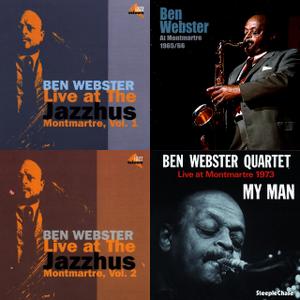 From 1959-1976, the club made jazz history as the European home for jazz giants Dexter Gordon, Ben Webster, Stan Getz, Kenny Drew and many other masters of the 60s and 70s. They all moved to Copenhagen because of Montmartre. The club got under their skin with its special atmosphere and extraordinary people. While living in Copenhagen, the great American jazz icons educated a whole generation of Danish jazz masters, including the famous Danish bass players Niels-Henning Ørsted Pedersen, Mads Vinding, Jesper Lundgaard and Bo Stief, drummer Alex Riel, trumpeter Palle Mikkelborgand many others. Among the other giants playing on and off at Montmartre were Roland Kirk, Oscar Pettiford, Joe Harris,Buddy Tate, Coleman Hawkins, Don Byas, Bud Powell, Julian ‘Cannonball’ Adderley, Cecil Taylor, Brew Moore, Harold Goldberg, Lucky Thompson, Archie Shepp, Johnny Griffin, Art Taylor, Booker Erwin, Albert Ayler, Dollar Brand (Abdullah Ibrahim), Don Cherry, Rune Gustafsson, Albert ‘Tootie’ Heath, Eli Thompson, Sonny Rollins, Yusef Lateef, George Russel,Teddy Wilson, Paul Bley, Bill Evans, Eddie Gomez, Richard Boone, Herbie Hancock, Eddie Henderson, Billy Hart, Keith Jarrett, Miroslav Vitous, Wayne Shorter, Joe Zawinul, Lee Konitz, Louis Jordan, Charles Mingus, Ken McIntyre, Nat Adderley, Donald Byrd, Tony Williams, Lou Bennett, Phil Woods, Charles McPherson and Dizzy Gillespie.
From 1959-1976, the club made jazz history as the European home for jazz giants Dexter Gordon, Ben Webster, Stan Getz, Kenny Drew and many other masters of the 60s and 70s. They all moved to Copenhagen because of Montmartre. The club got under their skin with its special atmosphere and extraordinary people. While living in Copenhagen, the great American jazz icons educated a whole generation of Danish jazz masters, including the famous Danish bass players Niels-Henning Ørsted Pedersen, Mads Vinding, Jesper Lundgaard and Bo Stief, drummer Alex Riel, trumpeter Palle Mikkelborgand many others. Among the other giants playing on and off at Montmartre were Roland Kirk, Oscar Pettiford, Joe Harris,Buddy Tate, Coleman Hawkins, Don Byas, Bud Powell, Julian ‘Cannonball’ Adderley, Cecil Taylor, Brew Moore, Harold Goldberg, Lucky Thompson, Archie Shepp, Johnny Griffin, Art Taylor, Booker Erwin, Albert Ayler, Dollar Brand (Abdullah Ibrahim), Don Cherry, Rune Gustafsson, Albert ‘Tootie’ Heath, Eli Thompson, Sonny Rollins, Yusef Lateef, George Russel,Teddy Wilson, Paul Bley, Bill Evans, Eddie Gomez, Richard Boone, Herbie Hancock, Eddie Henderson, Billy Hart, Keith Jarrett, Miroslav Vitous, Wayne Shorter, Joe Zawinul, Lee Konitz, Louis Jordan, Charles Mingus, Ken McIntyre, Nat Adderley, Donald Byrd, Tony Williams, Lou Bennett, Phil Woods, Charles McPherson and Dizzy Gillespie.
Re-Opening
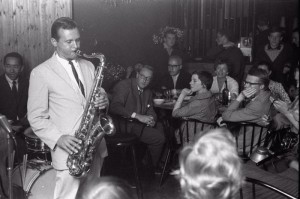 In May 2010 Jazzhus Montmartre re-opened in its original premises in Store Regnegade with a high-end international music profile. The re-opening of Jazzhus Montmartre made news around the globe, and the new Jazzhus Montmartre quickly made it back on the map as a top attraction of Copenhagen. The New York Times included Jazzhus Montmartre on its much-hyped list of must-see-places in the city under the headline “Rebirth Of Cool.” New York Times: “Rebirth of Cool” – on the re-opening af Jazzhus Montmartre
In May 2010 Jazzhus Montmartre re-opened in its original premises in Store Regnegade with a high-end international music profile. The re-opening of Jazzhus Montmartre made news around the globe, and the new Jazzhus Montmartre quickly made it back on the map as a top attraction of Copenhagen. The New York Times included Jazzhus Montmartre on its much-hyped list of must-see-places in the city under the headline “Rebirth Of Cool.” New York Times: “Rebirth of Cool” – on the re-opening af Jazzhus Montmartre
The re-opening of Montmartre in May 2010 was initiated by former child actor Rune Bech together with jazz pianist Niels Lan Doky (who after eight months was replaced as music director by saxophonist Benjamin Koppel as of February 2011). The former proprietor of the original historic venue, Herluf Kamp-Larsen, was present at the re-opening night. When the premises became vacant after many years as a hairdressing school, Bech and Doky jumped at the opportunity and reopened Montmartre at its original location. Restoring the club became a labour of love for a dedicated group of volunteers, out of love for jazz and the history of Montmartre, which has often been called “The Village Vanguard of Europe” in homage to its legendary sister club in New York.
Montmartre’s co-founder and part-time director, Rune Bech, was well known as a child actor who specialised in ‘fat boy’ roles in Danish comedy movies in the 1960s. As an adult, he served as a foreign correspondent for Politiken from 1989. In 1998 he co-founded the successful health portal NetDoctor.com, and in 2001 became the internet director for the leading Danish broadcaster TV 2 and a member of the executive management team. Rune Bech donated the funding capital for Jazzhus Montmartre that is his con-amore hobby project. In his spare time the serial entrepreneur is helping out at the front desk of Montmartre together with the many dedicated volunteers. Rune Bech had a vision to establish Montmartre as a non-profit organization from which it should not be possible for any private person to take out profit. As a consequence Jazzhus Montmartre is set up as a charity foundation with DR chairman Michael Christiansen as Montmartre’s chairman, and Rune Bech and lawyer Christian Schwarz-Hansen as fellow board members.
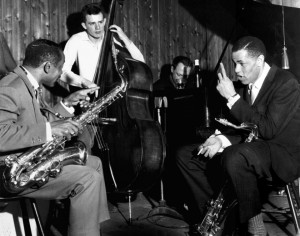 Before re-opening Jazzhus Montmartre the founders wrote eight missions for the club, The Montmartre Manifesto. In short, Montmartre should be an international landmark of great jazz and a place that discovers and presents new talent with world class potential. It is the ambition “to create a paradise for life lovers with a cozy and sincere ambience”. And, most importantly, “Montmartre should be known for its warm, welcoming and homey atmosphere attracting good people that follow their heart in life.” The Montmartre Manifesto
Before re-opening Jazzhus Montmartre the founders wrote eight missions for the club, The Montmartre Manifesto. In short, Montmartre should be an international landmark of great jazz and a place that discovers and presents new talent with world class potential. It is the ambition “to create a paradise for life lovers with a cozy and sincere ambience”. And, most importantly, “Montmartre should be known for its warm, welcoming and homey atmosphere attracting good people that follow their heart in life.” The Montmartre Manifesto
The Danish jazz published Christian Brorsen is the Music Director of Montmartre. He is backed up by an Artistic Council whose members are drummer Alex Riel, bass players Mads Vinding and Bo Stief, trumpet player Gerard Presencer and jazz saxophonist Benjamin Koppel. The club is run by a few of part-time staffs together with a great team of dedicated volunteers. With a limited audience capacity of only 85 seats, Montmartre is dependent on donations and membership fees from its club, Friends of Montmartre. Some of Denmark’s large foundations have supported the re-opening. With its high level of artistic ambition, Montmartre is dependent on support and donations.
The old Jazzhus Montmartre was known for the plaster masks that became an icon for the club in the 1960s. They were created in 1959 by the artist Mogens Gylling and attracted attention around the world as a remarkable work of art. When Montmartre closed in 1976 the masks disappeared, but the Montmartre team convinced Gylling, who still lives outside Copenhagen, to recreate his famous wall art with a twist. The ten new masks were put back on the wall by the artist himself during Copenhagen Jazz Festival 2010, an event heavily covered by the media. Official website: http://jazzhusmontmartre.dk Official website.

